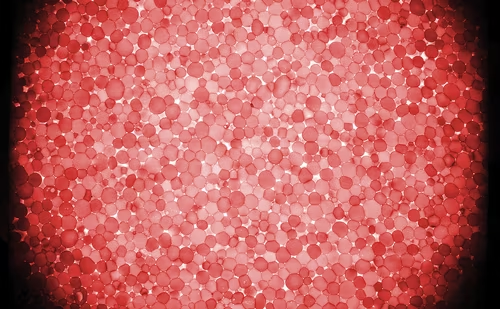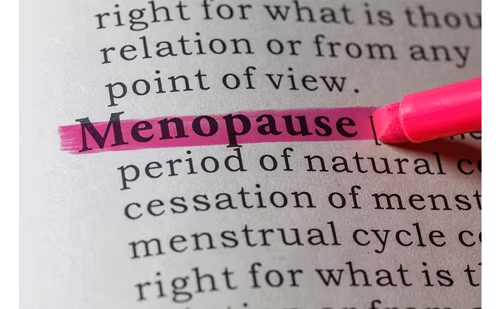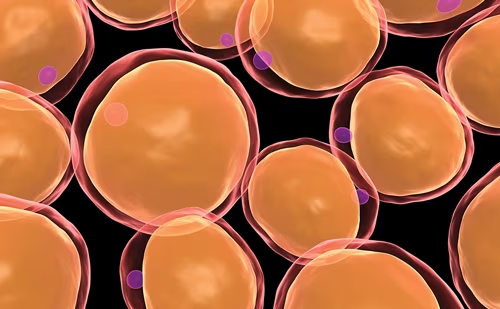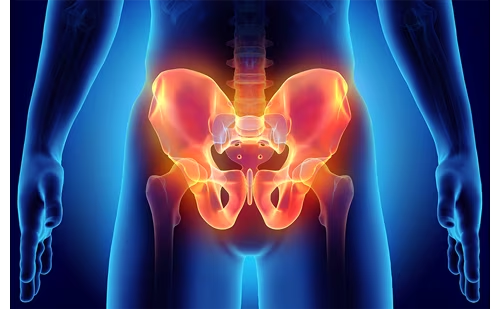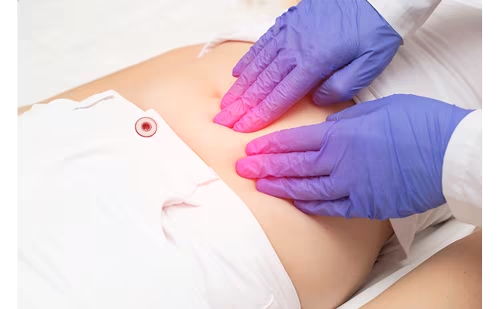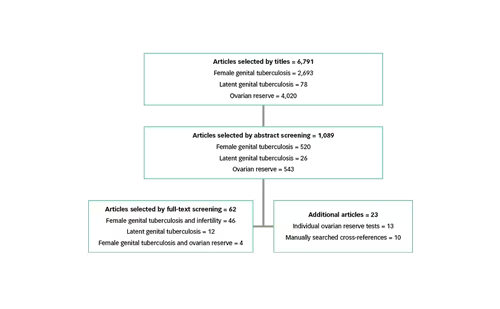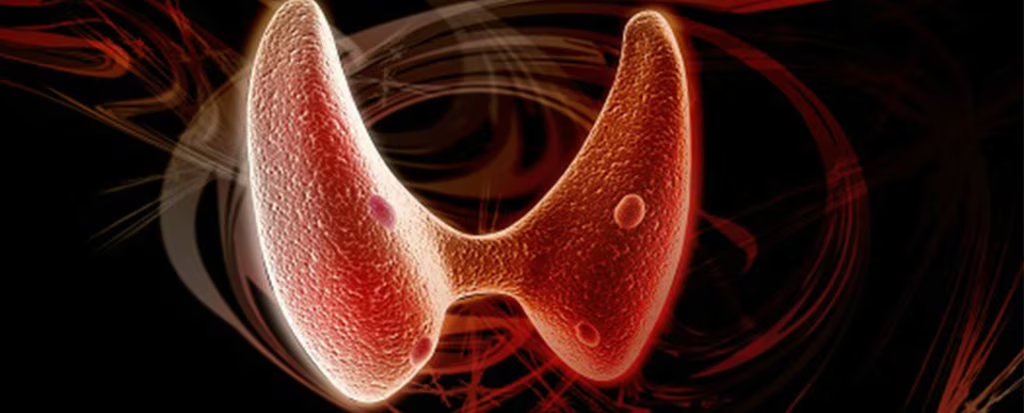Sexual thoughts and fantasies are a joy of life. Sexual desire is fun and a vital part of good health. It is a much appreciated basis for relationships between women and their partners. Sexual apathy is anguishing and distressing; it is a common complaint heard by gynaecologists. In older women, androgen production and sexual desire decline in parallel during late reproductive years, and continue to decline into post-menopausal years. As a consequence, it is logical to link declining androgens and sexual apathy as cause and effect.
Sexual thoughts and fantasies are a joy of life. Sexual desire is fun and a vital part of good health. It is a much appreciated basis for relationships between women and their partners. Sexual apathy is anguishing and distressing; it is a common complaint heard by gynaecologists. In older women, androgen production and sexual desire decline in parallel during late reproductive years, and continue to decline into post-menopausal years. As a consequence, it is logical to link declining androgens and sexual apathy as cause and effect. This logic is supported by the repeated confirmation that declining female sexual desire is aggravated by endocrine dysfunctions that involve loss of androgen effect: oophorectomy, menopausal estrogen replacement, corticosteroid treatment, adrenal insufficiency and hypopituitarism.
Sexual apathy is distressing. With increasing depression among women, many seek counselling and therapy. Androgens in pharmacologic doses can induce intense sexual desire. Thus, empiric self-medication with androgens has been practised for years. Recently, however, well-documented connections between declining androgen production in women and loss of sexual desire have become established as an area of disciplined scientific inquiry. Furthermore, restoration of sexual desire following androgens in doses approximating pre-menopausal physiology has been achieved in well-designed clinical trials.
This article examines androgen treatment for decreased sexual desire in ageing women. It evaluates new approaches, both available and investigational, to treat these women.
Declining Androgens and Ageing in Women
Declining androgen production with ageing is well documented.1,2 The topic has been reviewed previously by the author.1,2 Clinically relevant androgens in women include dehydroepiandrosterone (DHEA), its sulfoconjugate DHEA sulphate (DHEAS) and testosterone. DHEAS is a prohormone that originates almost exclusively from the zona reticularis, or innermost zone, of the adrenal cortex. The zona reticularis contains steroidogenic architecture that is uniquely configured to secrete substantial amounts of DHEAS.1,2
Production of DHEAS ranges from 5mg to 40mg per 24 hours, an amount that greatly exceeds almost all other steroid hormones. DHEAS circulates in a large, slow-turning pool at concentrations that are 100- to 1,000-fold higher than unconjugated androgens. As a prohormone, however, DHEAS has no identifiable receptors and must be converted into testosterone and dihytestosterone (DHT) to express its androgenic attributes.1,2
DHEAS is converted into testosterone and DHT within cells of target tissues. This intracellular production is initiated by DHEAS-metabolising enzymes (steroid sulphatases) to form DHEA, which is then converted to androstenedione, testosterone and to DHT. DHT then interacts with the signal transduction systems of the androgen receptor.1,2
DHEAS concentrations in girls increase detectably beginning at seven to eight years of age and are associated with adrenarche: increasing pubic and axillary hair, emerging sexual desire, increasing strength and muscle mass, increasing bone mass, maturation of the immune system and accelerated linear growth (see Table 1).1,2
DHEAS concentrations reach their peak in the 20s and 30s (see Figure 1). Production rates and circulating levels decline during the 40s and 50s. A clinical situation analogous to ‘reverse adrenarche’ emerges in which there is loss of pubic and axillary hair, decreasing sexual desire, loss of muscle mass and bone mass, immunosenescence and declining stature.1–4
Just as there is an increase in zona reticularis mass at adrenarche, there is a decrease in zona reticularis mass and fragmentation of its cells with ageing. The process closely resembles apoptosis (see Figure 2). This decline in zona reticularis mass is associated with the falling production and declining concentrations of DHEAS that occur with advancing age.3,4
Testosterone during reproductive years evolves partly from peripheral intracellular conversion of DHEAS and partly from direct ovarian secretion that originates mostly from the dominant ovarian follicle of the month. Thus, a mid-cycle rise in testosterone concentrations occurs in conjunction with the luteinising hormone (LH) surge, an event linked to increased mid-cycle sexual desire, which occurs at that time (see Figure 3).1,2
After menopause, the ovary evolves from a follicle-laden reproductive structure to an acyclic, androgen-secreting, stroma-dominant organ that shrinks to about half its original reproductive-age size (see Figure 4). The post-menopausal ovary is believed to produce significant amounts of testosterone from its remnant stromal architecture. The chronically elevated levels of LH associated with menopausal years further augment this production.1,2
Testosterone concentrations do not drop abruptly after menopause in women with intact ovaries. While the mid-cycle testosterone rises, basal concentrations decline only gradually. Post-menopausal oophorectomy, however, is associated with a sharp drop in testosterone of approximately 40–50%. Not surprisingly, post-menopausal oophorectomy is associated with lost sexual desire.1,2
Declining androgens are associated with subtle symptoms that take years to evolve and can be difficult to recognise. Depletion of androgens is not lethal, but their decline may accelerate some processes traditionally associated with ageing and mortality (i.e. the characteristics of reverse adrenarche that are summarised in Table 1).1,2
Sexual Apathy and Ageing
Declining sexual desire with ageing is well documented;1,2 the author has reviewed it previously.1,2 Female sexual desire is influenced by variables that include good general health, an available and attractive partner, freedom from psychotropic drugs (e.g. antidepressants) and a safe environment. Advancing age and the endocrinology of advancing age are but two aspects of a highly complex behaviour.1,2,5
Sexual apathy appears to be one of the most prevalent female sexual problems across all age groups. Several surveys have compared women before menopause and after menopause:
- a longitudinal study of women aged 45–55 found that multiple indices of sexual function, including desire, significantly declined from the late peri- to the post-menopausal years;6
- an interactive survey reported that 45% of post-menopausal women younger than 55 years of age indicated significant declines in sexual desire;7 and
- multiple investigations show highly significant declines in sexual activity with advancing years.8–10
In addition to the effects of age, sexual desire declines in association with oophorectomy, menopausal oestrogen therapy, treatment with corticosteroids, adrenal insufficiency and hypopituitarism, all of which result in diminished androgen availability. In a study assessing indices of sexual functioning between age-matched groups of women who had undergone hysterectomy with or without oophorectomy, the oophorectomised women experienced significant decreases in indices of sexual desire compared with those whose ovaries were not removed.1,11–14
Androgen Therapy Can Restore Sexual Desire
Androgens administered in pharmacologic doses can increase sexual desire, even chronically ill women. Thus, many years ago, when androgens were administered as chemotherapy for advanced breast cancer, enhanced sexual desire was an unwelcome side effect. Even worse, virilisation (e.g. male pattern baldness, deepening of the voice) was a common adverse reaction. The major problem over the years has been in devising systems that can deliver androgens at doses closely approximating the physiology of pre-menopausal androgen production. Ideally, in otherwise healthy older women, the therapeutic goal is to restore sexual desire without virilising side effects.1
A recent literature survey reveals at least six randomised single or double-blinded clinical trails showing significant increases in sexual desire with testosterone versus oestrogen-only treatments.14,15 In addition there are eight randomised, double-blind, placebo-controlled clinical trials demonstrating significant increases in sexual desire with testosterone treatment versus placebo.16–18
Two of these trials utilised a matrix patch (Intrinsa®, Proctor and Gamble) that delivered testosterone at 300μg per day. The subjects were all women who had undergone oophorectomy. This dose approximates normal production of testosterone in pre-menopausal women. At 300μg per day, there have been consistent increases in sexual desire with surprisingly few adverse effects.
Of particular note, the psychological instruments used in the six placebo-controlled trials where devised specially to measure attributes of sexual desire.15,16 Two of the studies involved over 1,100 women but were limited to 24 weeks, so that long-term effectiveness and side effects beyond that timeframe are not known.15,16 In December 2004, a US Food and Drug Administration (FDA) advisory committee, concerned that the increase in sexual desire was too modest and that long-term effects were not adequately documented, recommended against approval of Instrinsa®. The FDA followed its advice, and Intrinsa® is not available.19
All Androgen Treatments Declined
The FDA has not approved any androgen treatment for decreased sexual desire. Given that some 145,000 women have received prescriptions for testosterone gel (for men at 10 times the dose) and that at least 20% of testosterone gel sales are to women, there is considerable pressure on the agency to re-examine this matter.19 In the meantime, physicians have other options. Many androgen preparations are prescribed off-label or are self-administered. These include topical gels, creams, vaginal gels, subcutaneous implants and testosterone patches (developed for men), intramuscular (IM) injections, sublingual tablets, oral methyltestosterone and oral DHEA. Three off-label androgen regimens include:
- Methyltestosterone, 1.25mg per day, given with oral conjugated oestrogens, 0.625mg, as Estratest® (Solvay). In a randomised, controlled trial of 16 weeks, Estratest® significantly increased sexual desire.17
- Testosterone in pleuronic-lecithin organogel (PLO) gel is compounded by local pharmacies or can be obtained on the Internet. Preparations may contain variable and inconsistent doses and require intensive physician monitoring of blood testosterone levels to be administered safely.
- Testosterone implants containing 50–100mg can be placed surgically under the skin using local anaesthesia. Each implant lasts about four months. These implants have been studied extensively in Australia where they have been demonstrated as effective in treating decreased sexual desire in limited clinical trials. They require extensive physician monitoring./18
Several androgen products, now undergoing clinical trials, are not available (see Table 2).19
The Future
In the US, post-menopausal women in increasing numbers remain highly productive and influential. In response to their needs, hormone replacement treatments are becoming sophisticated and focused. There is clear documentation that androgen production declines in women as they age and that androgen production is linked to sexual desire. Furthermore, there is convincing evidence from well-designed and sizable clinical trials that restoration of androgens approximating physiology of reproductive years restores lost sexual desire to many. It is not yet known whether prolonged exposure to pre-menopausal androgens is safe. It is clear that, until the FDA approves, physicians and their patients will continue to use off-label, locally compounded products with unproven efficacy and undocumented safety. ■


